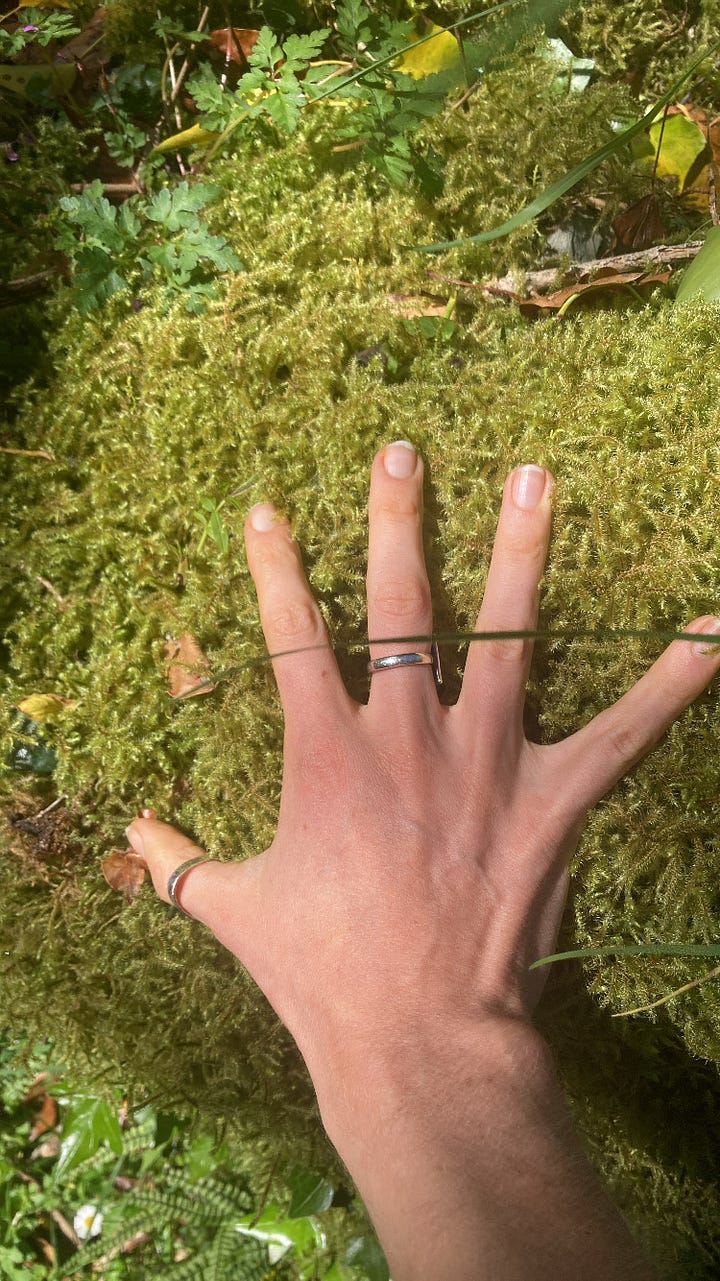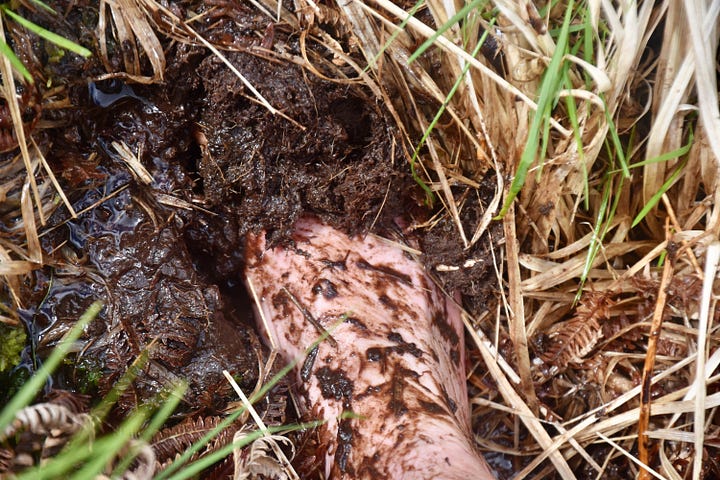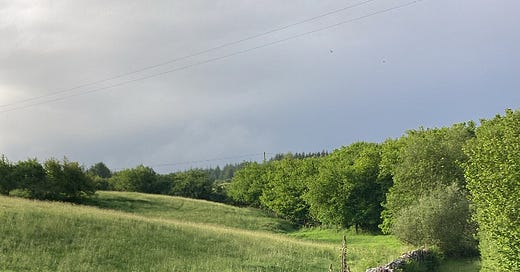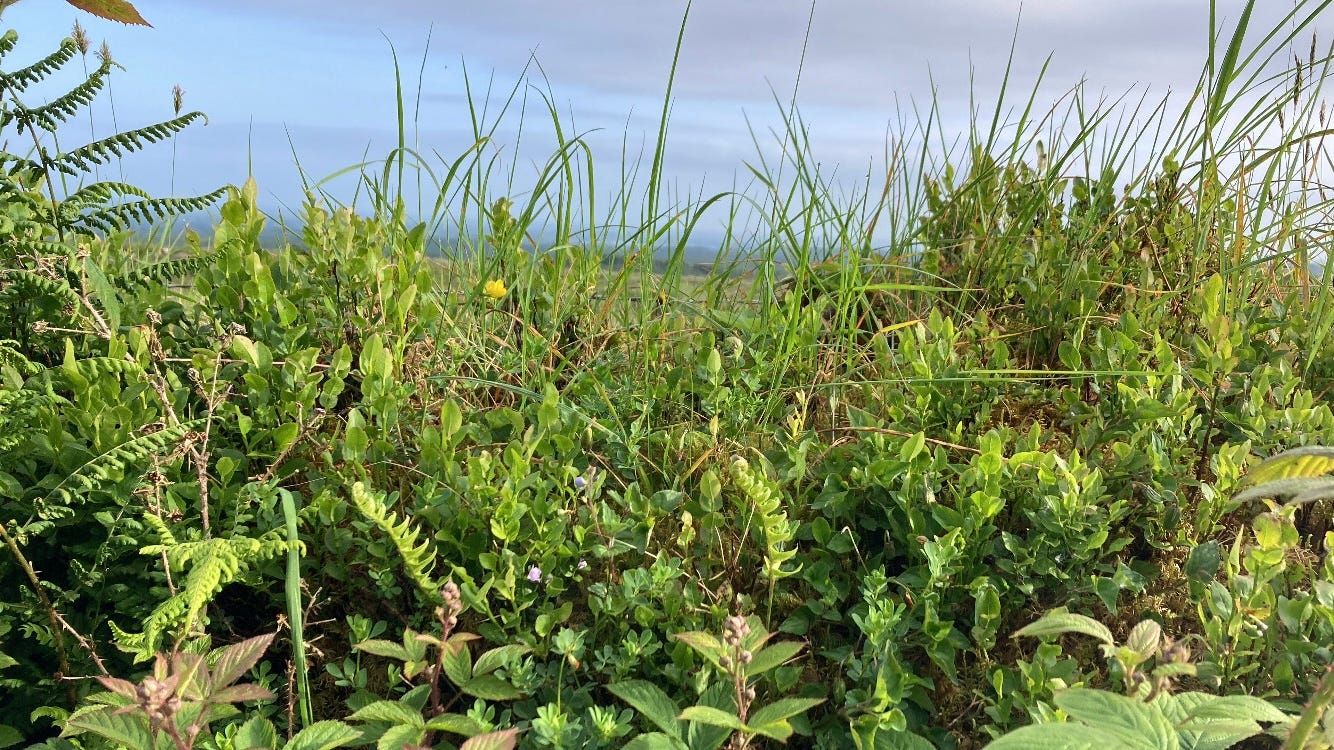Creating can feel a little like landing on the moon - a foreign, rocky, dust-bitten terrarium of unknowns. It’s quiet here, it's restless. The pointlessness of it all is beautiful. Thank goodness for soil.
But I digress.
It’s June and all is blooming sweetly. Walking up the track the catkins are in their yellowed fullness, flying off course, through the whisper, through the air, and straight into my heart like a thousand tiny arrows. They’ve been terribly kind this year, and the grass on the track has become a meadow - dog daisies, buttercups, earth's tongues and foxgloves - every petal oozing colour and fragrance raising us high and sending us sky. I’m lucky I don’t have hay fever. And yet I can’t help but feel feverish here, blushing amongst such sweetness.
How embarrassing!
And here’s a photographic example of it below, in case you were looking (and yes, looking out the window counts. It has been proven that simply looking at green photos through a screen can radically decrease our anxiety levels - and I’m guilty of long late nights in the concrete city, boggling over how picturesque and lovely and quaint the grass looks through my phone).
Perfect loveliness, all of it - the grass grows green where under the softest of rain.
Em-BOG-iment
How can we find the way back, when concrete cities shake? When fire eats the trees? Is it really worth trying? I think so. Because even if there isn’t any good reason to be here at all, there is always a good reason to ‘become’.
We once lived on a body of earth undivided. By which I mean, whilst there were of course floating land masses known today as countries, there were no borders. The world was sin fronteras, and bodies roamed free.
Then came agriculture, religion, and the human desire to possess. Forests were felled, and the ground beneath our feet was split according to who it ‘belonged’ to. Suddenly we did not own it all, instead, it owned us. Suddenly there were spaces we were not allowed to tread, simply for the fact they were not ‘ours’.
The wildflowers and wildlands turned to corn, oats, wheats and beans. We cut up the body of the earth into bite size portions. The earth became profitable - we became greedier. We could no longer wander through endless forests and forage, for much of the wild fruits were no longer known to us, and we worried we would be attacked by the poisonous ones. We trusted our dominion - we feared the wild.
This process, of course, was very slow. And we are lucky that it is incomplete.
There are still pockets of wild eternity scattered across the world. There are still pieces of the earth that have probably never been trodden by human feet. I know for sure that there are still corners of the land no human shall ever tread. There is still secrecy in the branches. There is still so much to be green about.
We can still get lost in the jungles..
Nature creates itself through us.
The interconnectedness of all beings is like an onion - many layers.
How many lives have expressed themselves before mine? It must be millions upon millions upon trillions. Even I am made of microbes. And yet life heals, despite it all, expressing itself in a completely new way, each and every day.
Earth Body Art
Andy Goldsworthy is an artist working with the body. This has led him through some sharp hedges. In his recent work, he uses his own body to act upon, and with, the land, creating a performance of sorts. Of ‘Hedge Walk’ he says ‘“I came out of one or two of those feeling pretty beaten up. But what a beautiful thing to do. Swimming through a hedge” (source: the guardian).
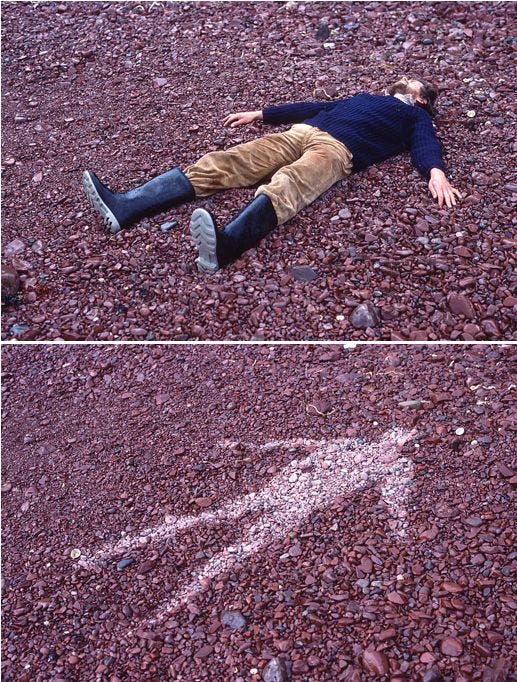

It seems on the surface to have no meaning and yet when we look a little deeper it does. My words run rampant across the page. And you are experiencing the past me who wrote this in the present moment. Could anything be more magical than that?
He uses his art as a means of witless wandering and expanding possibilities. For him it a way of defamiliarizing us to things we might not always notice. He does not have a road map, and he uses his art to test the limits of the Earth-body connection.
Similarly, in his ‘Rain Shadow’ of the 1980s he physically and metaphorically embeds himself into the earth by laying down in the rain, then getting up some time later and photographing his dry silhouette in the ground. In this sense he plays with the motion of time itself.
A ghost of himself lays on the ground beneath him. In this way he is both absent and present. He is there in memory, but all we can see on the ground is his empty form.
This embodiment can be as simple as making a snow or sand angel, imprinting ourselves on the surface of our planet in our own small way. We are bodies of the earth after all.
